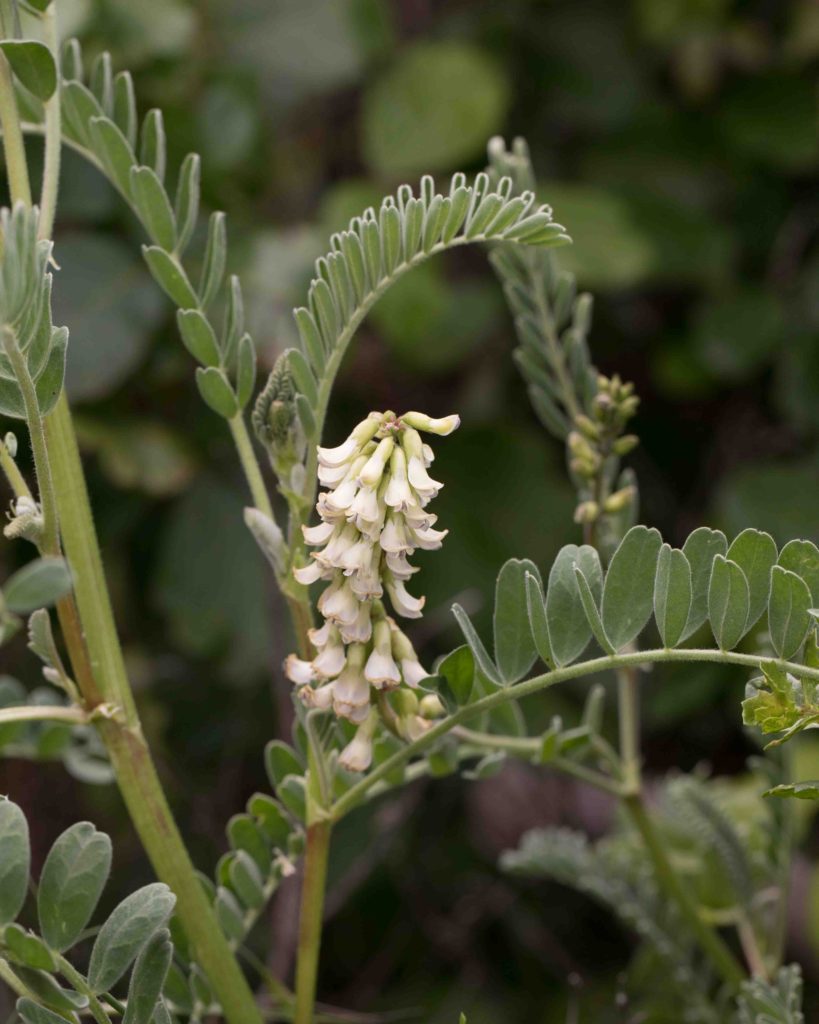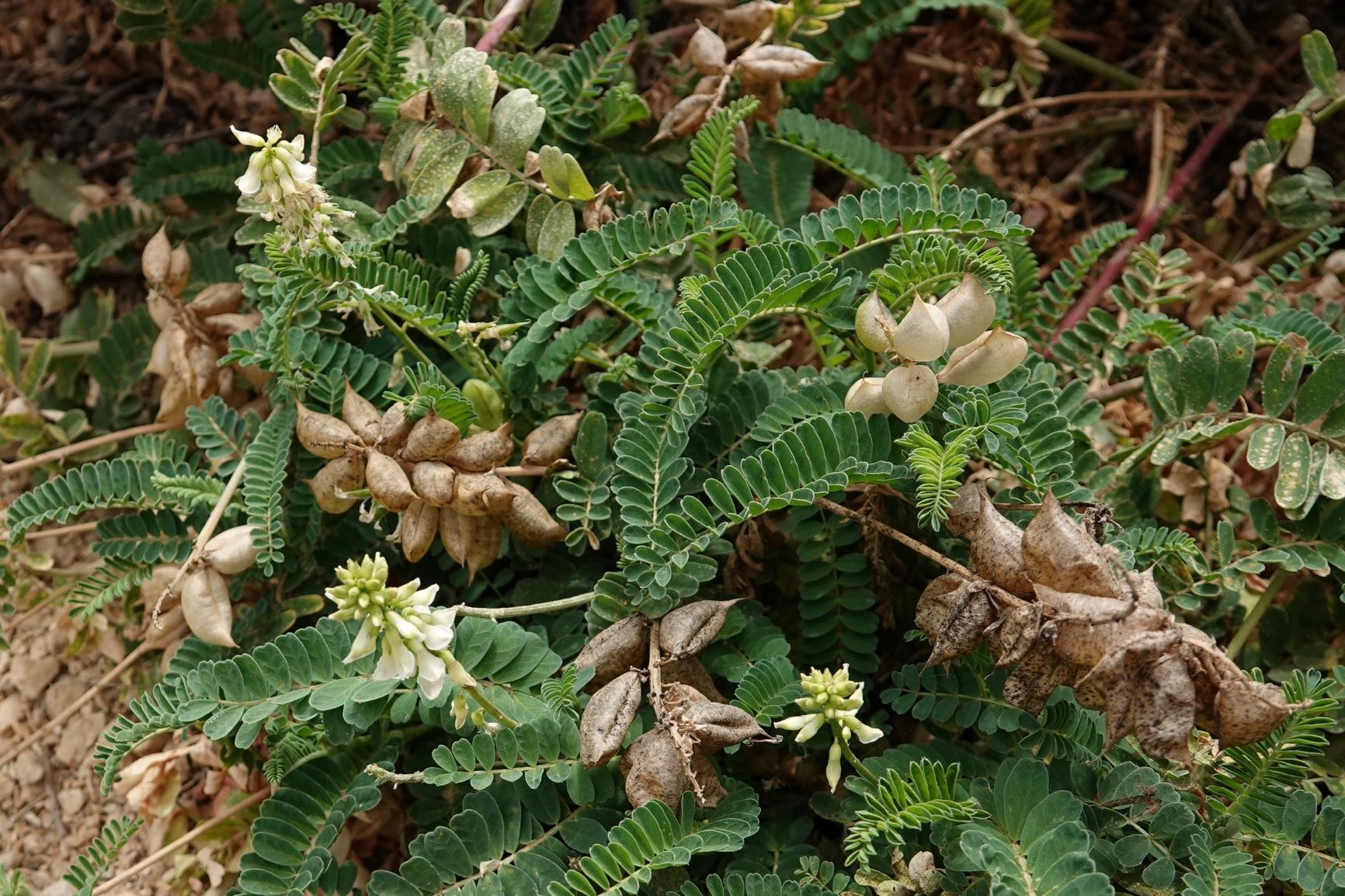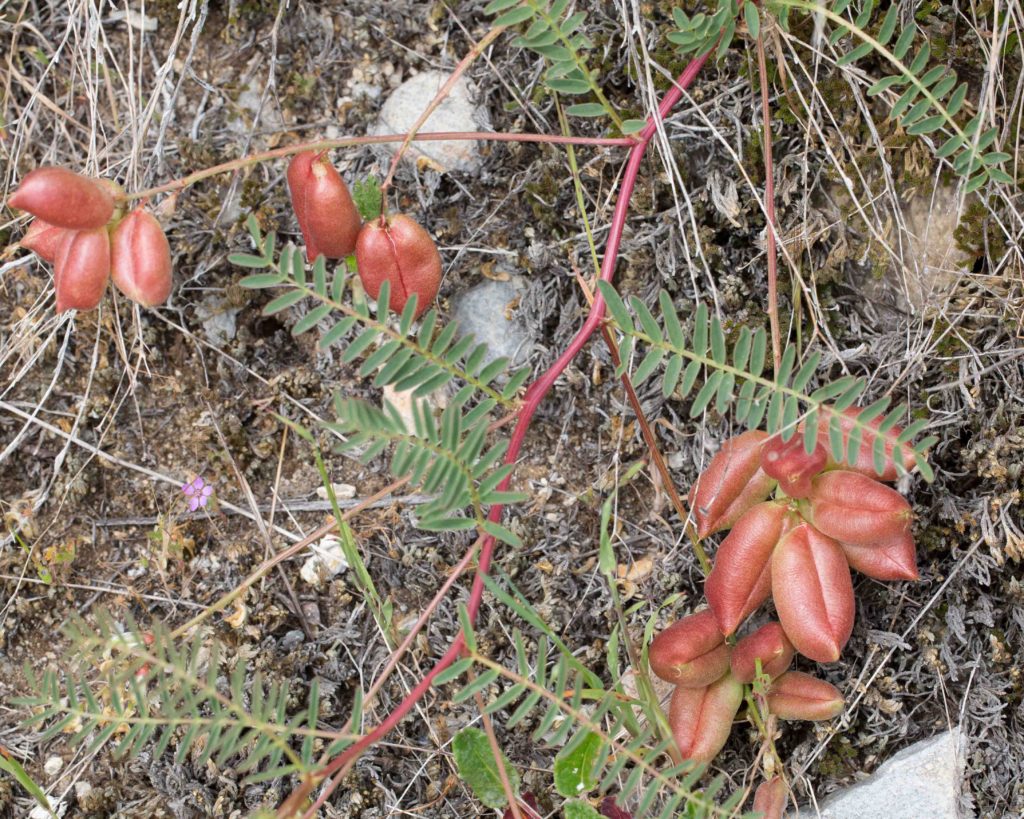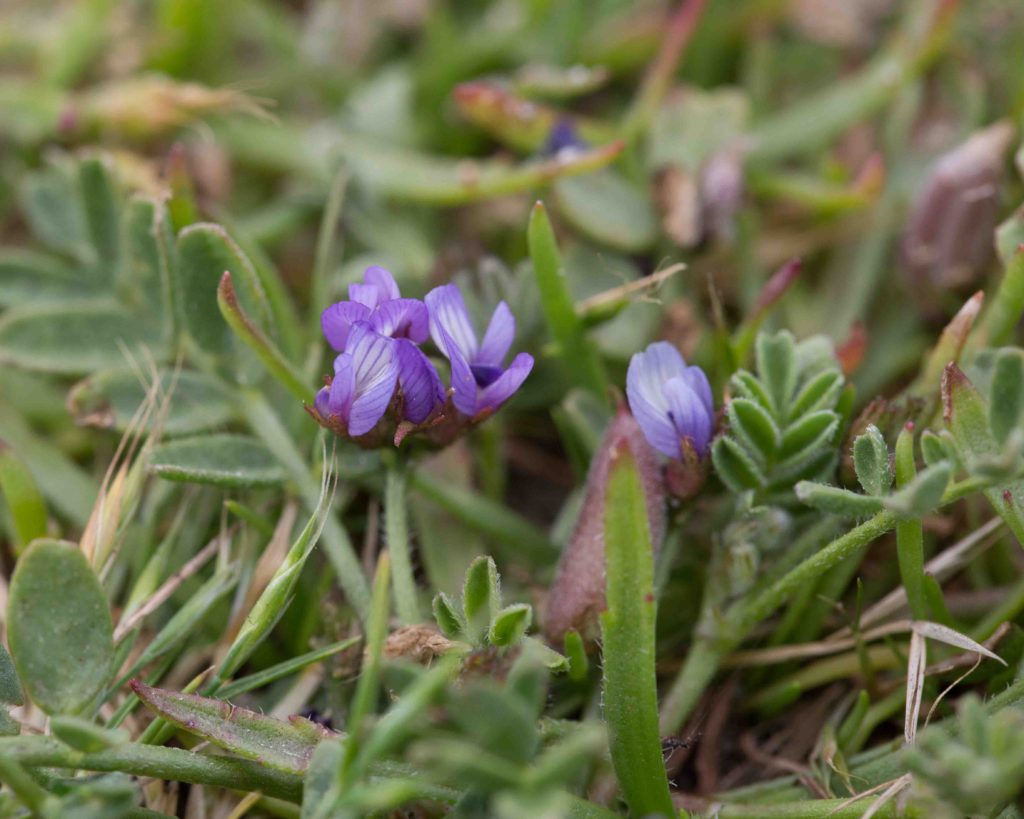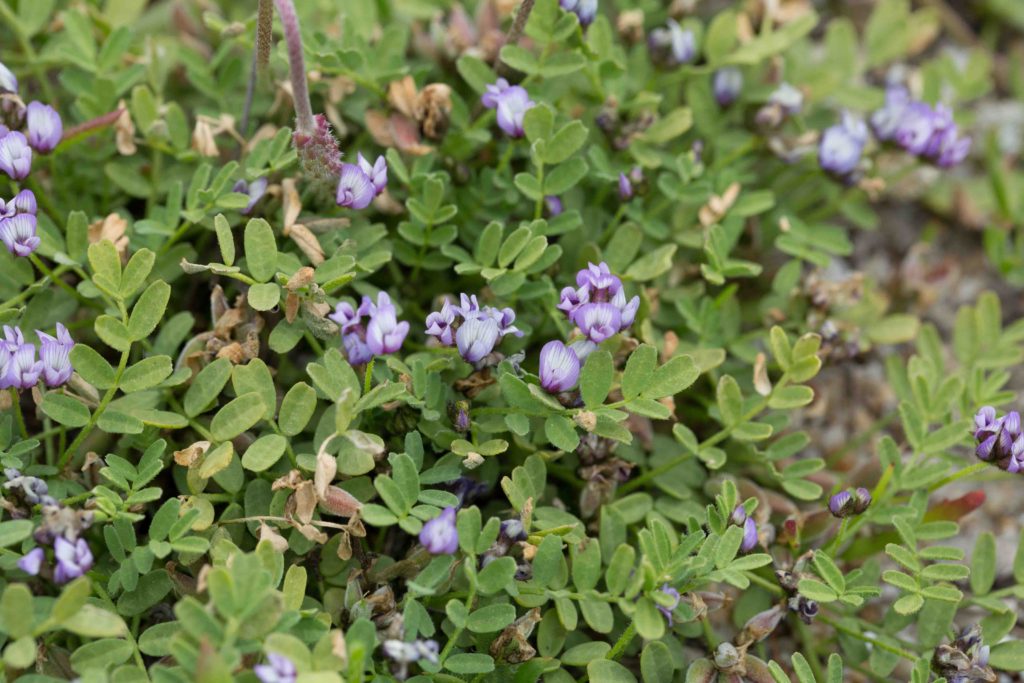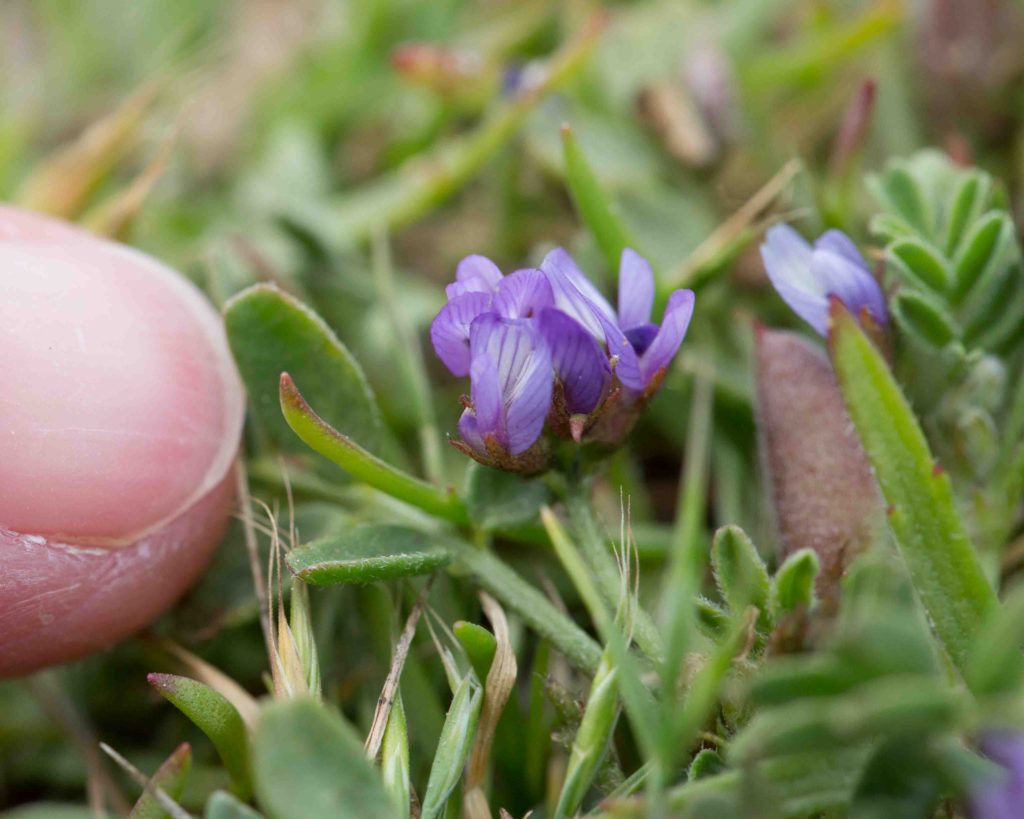Fabaceae: Pea Family — Astragalus (Milkvetch / Locoweed)
The pea family has 5-petaled flowers, consisting of a wide upper banner petal, two wing petals, plus two lower petals which are fused to form a boat-shaped keel. Many produce heads or spikes, consisting of multiple individual flowers (examples are lupines and clovers). The seed pod is generally a “legume”. This is a long, flattish pod, swollen by the seeds, and splitting lengthwise along both the top and bottom.
Astragalus is a varied genus with many species, especially in the desert and towards the Central Valley. Distinguishing them may require close attention to the number and color of leaflets, or to the shape and structure of the fruits, which may be inflated like a bladder.
Nuttall’s Milkvetch / Gray Locoweed – Astragalus nuttallii var. nuttallii
Blooms:
All year
Plant Height:
20–100 cm
Flower Size:
Medium cluster
Origin:
Native
Rare or Endangered?
Yes – 4.2
Habitat:
Mainly coastal, on dunes & bluffs
Notes:
This is the most common species found by the coast. It has 10–21 pairs of small, oval blue-green to grayish leaflets, often in a dense tangle. Elongated clusters of creamy-white flowers develop into inflated pods, pale green below and pinkish above. When the seeds dry, the pods rattle (hence another of its common names—”Rattleweed”). Photo #3 by CJH.
Coastal Dunes Milkvetch – Astragalus tener var. titi
Blooms:
Mar–June
Plant Height:
2–30 cm
Flower Size:
Very small
Origin:
Native
Rare or Endangered?
Yes – 1.b1
Habitat:
Dunes and sandy flats
Notes:
Extremely rare, known only from one small area on 17 Mile Drive. It is low-growing, with stems less than 12 cm long. There are 2–7 tiny bluish-purple flowers in each inflorescence. Leaves are 5–8 cm long, with 7–17 leaflets. There are uncomfirmed reports that the species was introduced in Point Lobos.
